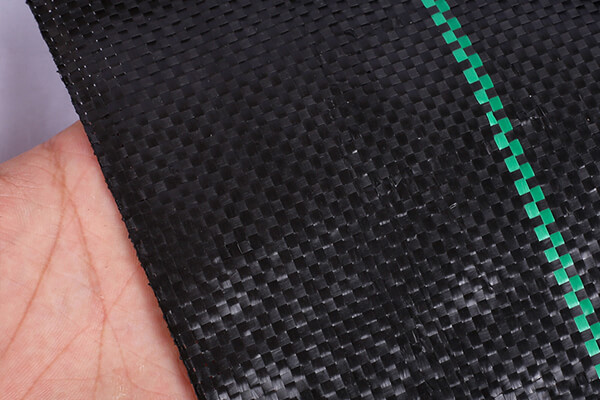Agricultural weed control fabric is a type of cover cloth used in clean agriculture such as vegetable growing, flower growing, and crop farming. They are effective in preventing weeds, insects, pests, and keeping the soil moist.
Agricultural weed control fabric is made from imported virgin PP particles, colorants, anti-oxidants, and UV inhibitors. The fabric has one side silver-gray and the other side black. It comes in various sizes and is widely trusted by farmers. So, what is the thickness of agricultural weed control fabric? Let's find out through the following content shared by EPPVietnam.
When to use agricultural weed control fabric
As mentioned above, agricultural weed control fabric is usually used to grow many types of crops such as:
- Bitter melon, watermelon, cucumber, pear melon, bottle gourd, and strawberry.
- Pineapple grown in the farm is planted in rows.
- Leafy vegetables are mostly covered with this fabric, such as chili, tomato, hyacinth bean, cabbage, cauliflower, and asparagus.
These vegetables are popular because they are often grown in rows on the surface of the weed control fabric. Their growing season is longer than that of ordinary leafy vegetables, so they need more protection from weeds and pests.
Thickness of agricultural weed control fabric

-
Material: PP.
-
Width: 0.4m-6m.
-
Length: According to customer requirements.
-
Color: Black, green, according to customer requirements.
-
Origin: Vietnam.
-
Processing: UV-resistant.
-
Applications: Sowing, flower growing, tree planting, floor covering.
Some outstanding benefits of agricultural weed control fabric are:
- Agricultural weed control fabric limits the growth and development of weeds, reduces tillage, and lower costs.
- Using agricultural weed control fabric can make it easier for farmers to harvest and save labor.
- The weed control fabric limits water evaporation in the soil, keeps the soil moist, and saves water for irrigation. As the fabric can prevent fertilizer washing and erosion, it saves fertilizer. It helps plants absorb nutrients maximally, so it is more effective than traditional farming methods.
- The layer of weed control fabric covering the soil makes vegetables lying on the ground not directly in contact with the soil, so keeping them clean increases the value of the products.
- The silver color on top has a strong reflective effect, repelling predatory insects such as stink bugs and ticks. Additionally, the whitewhite-silver also has a reflective effect on sunlight, creating good conditions for plant growth. Receiving more light (especially for the winter crop which often lacks light) helps plants photosynthesize well.
- In the winter, the agricultural ground cover retains heat in the soil, helping plants to grow and develop better.
- The use of covering materials creates more conditions for farmers to apply new agricultural techniques and new plant varieties.
- Another important advantage of agricultural ground cover is that it limits the direct intrusion of soil pests from below.
Guide on how to fertilize plants after using agricultural ground cover:
You may be wondering how to fertilize plants after planting on agricultural ground cover. Refer to the instructions below.

How to fertilize as a base layer:
Spread 1/4 - 1/3 of the total amount of chemical fertilizer by spreading and mixing evenly. It is better to use more fertilizer than when using a mulch cover. After covering the film on top, there is no need to remove it to fertilize again. This will save effort and prevent the fertilizer from evaporating under the sun or being washed away by rain.
How to fertilize as a top dressing:
There are usually two main methods, specifically:
* Water the fertilizer at the root
During the plant's early stage of less than 20 days old, a can, pot or hose barrel can be used, then dilute the fertilizer and water directly under the plant's root (water into the planting hole). Note, only use fertilizers that are easy to dissolve in water such as Urea or DAP in small quantities.
* Sprinkle fertilizer at the base of the plant
- Fertilize twice on days 15-20 and 30-45. After planting, especially for short-day fruit and vegetable crops such as bitter melon, cucumber, black-eyed peas, cowpeas...
- Fertilize three times for long-day fruit and vegetable crops such as tomatoes, peppers, and lungo beans (in addition to fertilizing twice as above, fertilize again after 50-60 days of planting). Each time, about 1/4 of the total amount of fertilizer should have enough NPK nutrient components.
With the above sharing, I hope it has helped you understand more about the thickness of agricultural ground cover - Weed Control Fabric Thickness. If you have a need for using Jumbo bags or agricultural ground covers, please contact EPP Vietnam Co., Ltd. at hotline 0986 002 888 for the most detailed advice.
🌐Địa chỉ: Tầng 19, tòa C, West Bay, Ecopark, Văn Hưng, Hưng Yên
🌐Website: https://epp.vn - https://eppvietnam.trustpass.alibaba.com
📲Ms. Jennifer: +84 986 002 888 - sales@epp.vn
📲Ms. Vera: +84 962 055 998 - sales02@epp.vn
📲Ms. Ivy: +84 973 650 865 - sales03@epp.vn
📲 Mr. Lee: +84 976 791 865 - sales03@epp.vn



